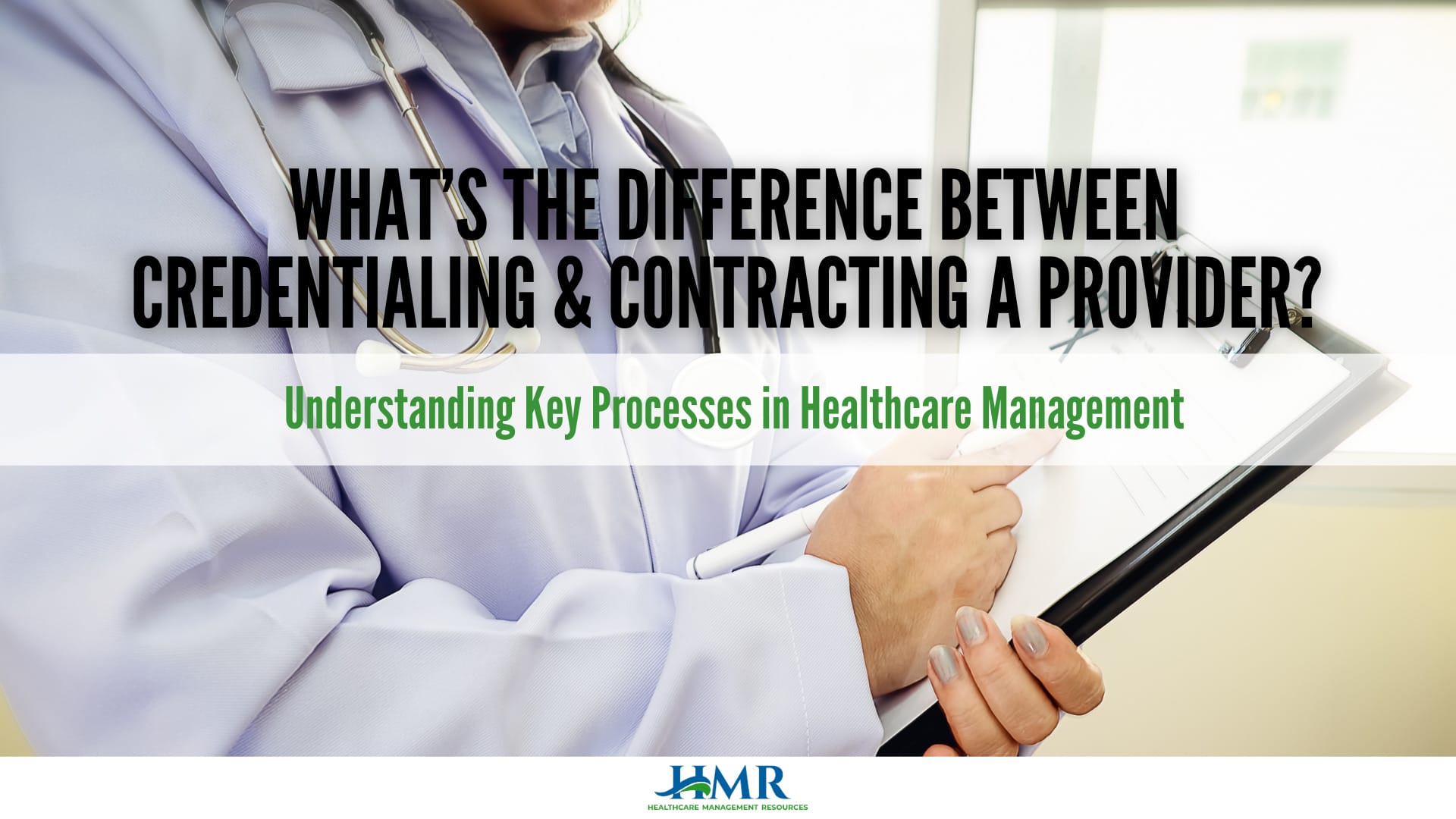What’s the Difference Between Credentialing & Contracting a Provider? Understanding Key Processes in Healthcare Management

Welcome to our latest blog post where we delve into the often-confused terms in healthcare management: Credentialing and Contracting. These two processes are fundamental in ensuring the quality and efficiency of healthcare delivery, yet they are distinct in their purposes and procedures. Let’s break down each term to understand their differences and why they are both crucial in the healthcare industry.
Credentialing: Ensuring Quality and Competence
Credentialing is the process of verifying the qualifications of healthcare providers. This includes checking their educational background, training, work experience, and licensure. Credentialing ensures that the healthcare professionals who treat patients are qualified and competent to provide medical care.
Key Aspects of Credentialing:
Verification of Qualifications
This involves confirming the provider’s medical degrees, residency, fellowships, board certifications, and state licenses.
Background Checks
Credentialing includes looking into the provider’s work history, malpractice history, and any disciplinary actions against them.
Ongoing Monitoring
Once credentialed, providers are regularly re-evaluated to ensure they continue to meet the necessary standards.
Credentialing is essential for patient safety and quality care. It is also a requirement for healthcare providers to be part of insurance networks and to comply with regulatory standards.
Contracting: The Business Relationship
Contracting, on the other hand, is the process by which a healthcare provider enters into a business agreement with a payer, such as an insurance company or a government payer. This process determines the terms of the provider’s engagement with the payer, including reimbursement rates, billing practices, and the services covered under the contract.
Key Elements of Contracting:
Negotiation of Terms
Providers and payers negotiate the rates for services, coverage details, and other contract terms.
Legal Agreements
Contracting involves legally binding agreements that specify the responsibilities of both the provider and the payer.
Network Participation
Through contracting, providers become part of a payer’s network, which allows them access to a broader patient base.
Contracting is crucial for defining the financial and operational relationship between healthcare providers and payers. It directly impacts the provider’s revenue and the accessibility of services to patients.
The Interplay and Importance
While credentialing and contracting are distinct processes, they are interconnected. Credentialing is often a prerequisite for contracting. Payers typically require providers to be credentialed before they can enter into a contract. This ensures that only qualified providers are included in their networks, maintaining the standard of care provided to their members.
The Bottom Line:
- Credentialing focuses on verifying the qualifications and competence of healthcare providers, ensuring they are fit to offer medical services.
- Contracting establishes the business terms under which providers deliver services to patients covered by a payer.
Both processes are vital in maintaining the integrity, quality, and sustainability of healthcare services. Understanding the differences between credentialing and contracting helps in appreciating the complexities involved in healthcare management and the effort to ensure high standards of care.
We hope this blog post has clarified the differences and importance of credentialing and contracting in the healthcare industry. Stay tuned for more insightful content on healthcare management and practices!
This article delves into the multifaceted realm of employee benefits in healthcare management. We will explore the various types of benefits offered, from essential health insurance and retirement plans to paid time off and opportunities for professional growth. Understanding the critical role these benefits play in attracting and retaining skilled professionals is essential for healthcare organizations striving to maintain a competent and content workforce.
Through this comprehensive exploration, we aim to underscore the significance of employee benefits as a cornerstone in healthcare management, crucial for both employee welfare and the effective functioning of healthcare organizations.
Types of Employee Benefits in Healthcare
Health Insurance
Elaborate on different health insurance plans provided, including coverage details.
Retirement Plans
Discuss 401(k) plans, pensions, and other retirement benefits specific to healthcare employees.
Paid Time Off (PTO) and Sick Leave: Explain the policies for vacations, personal days, and sick leave.
Professional Development Opportunities
Describe support for continuing education, certifications, and training relevant to healthcare.
The Importance of Employee Benefits
Attracting Talent
Analyze how benefits attract qualified professionals to the healthcare industry.
Employee Retention
Discuss the role of benefits in reducing turnover rates.
Job Satisfaction and Morale
Explore the relationship between employee benefits and overall job satisfaction and morale among healthcare workers.
Work-Life Balance
Consider how benefits like flexible scheduling contribute to a better work-life balance for healthcare employees.
Impact on Healthcare Management
Financial Implications
Examine the cost of providing benefits versus the cost of high employee turnover.
Legal and Regulatory Considerations
Outline the legal requirements for providing certain benefits and the implications of non-compliance.
Strategic Planning
Discuss how healthcare managers can strategically use benefits to meet organizational goals.
Case Studies
Present real-life examples of healthcare organizations successfully managing employee benefits.
Challenges and Future Trends
Adapting to Change
Discuss how changes in healthcare policies and economic conditions affect benefit packages.
Innovative Benefits
Look into emerging trends like wellness programs, telehealth benefits, and mental health support.
Addressing Diverse Needs
Explore how healthcare organizations tailor benefits to meet the diverse needs of their workforce.
Conclusion
In conclusion, employee benefits play a pivotal role in the healthcare management landscape. They are not just perks for the healthcare professionals but essential tools for organizations to attract, retain, and motivate a skilled workforce. In the complex and demanding world of healthcare, where the well-being of employees is directly linked to patient care, a robust benefits package is crucial.
